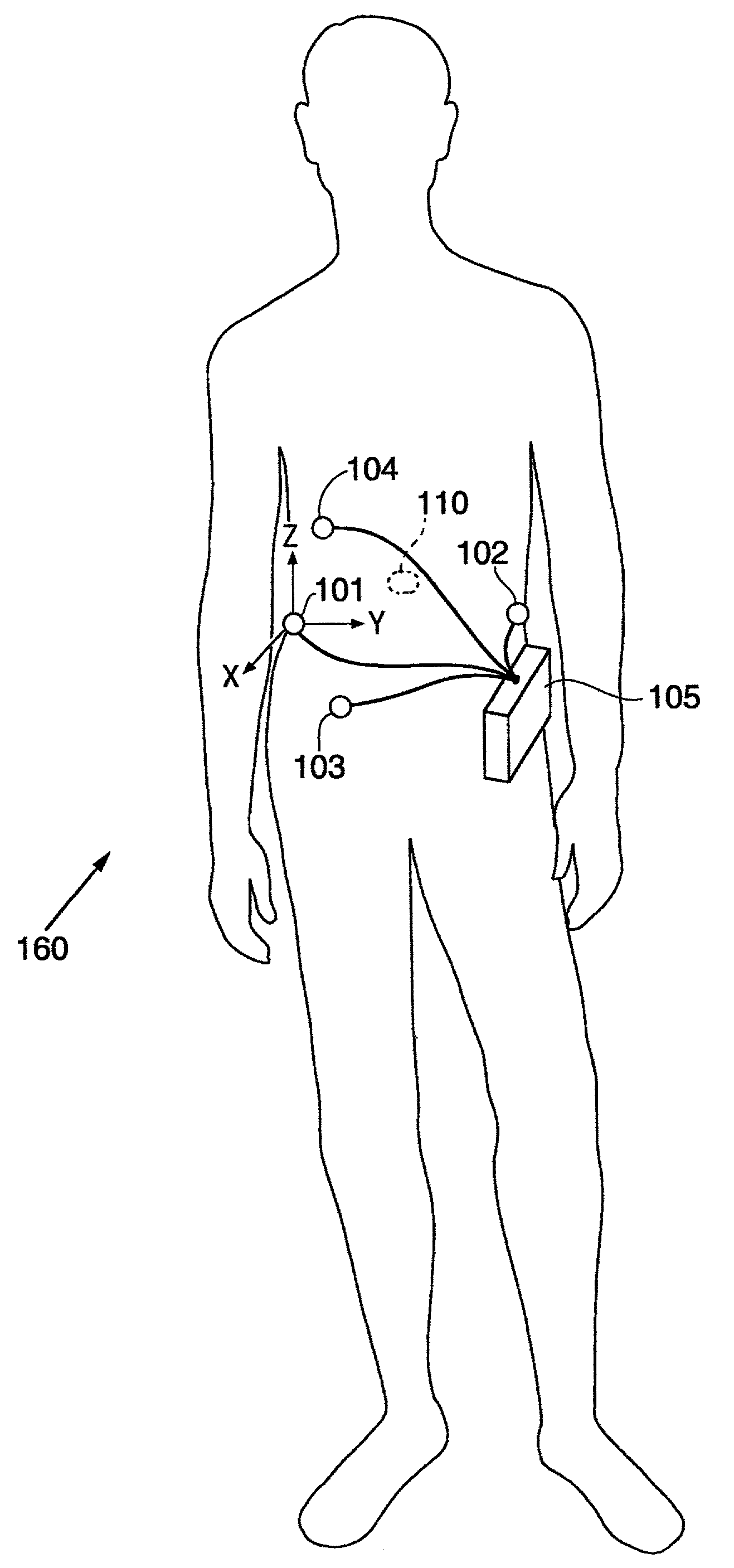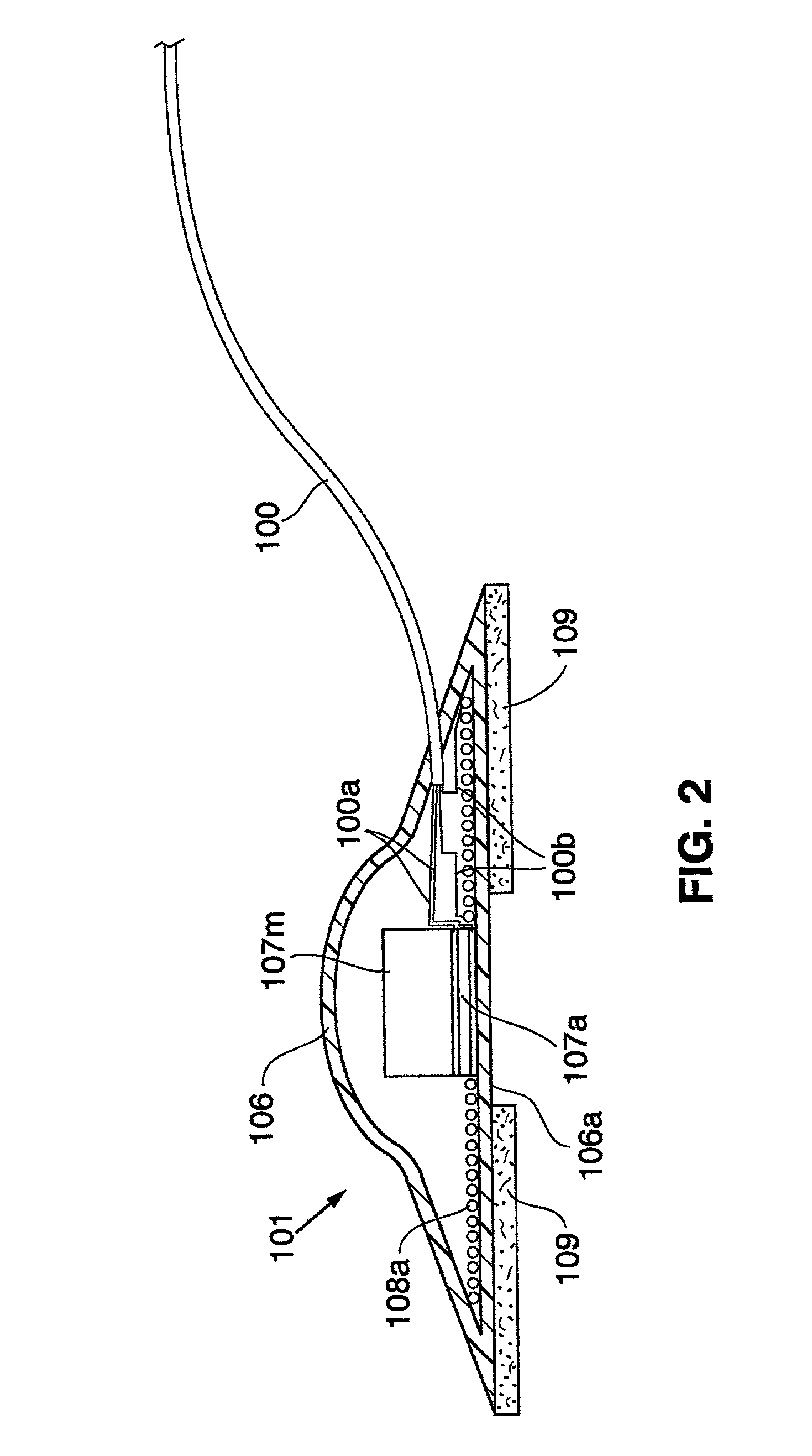Capsule and method for treating or diagnosing the intestinal tract
- Summary
- Abstract
- Description
- Claims
- Application Information
AI Technical Summary
Benefits of technology
Problems solved by technology
Method used
Image
Examples
first embodiment
[0083]As illustrated in FIGS. 3A and 3B, a capsule 110 comprises a liquid impermeable and airtight capsule body 111. In general, the capsule of the present invention is sized so that it is capable of being ingested for passage through the intestinal tract. For adult human use, a preferred embodiment of the capsule is to be sized so that it has a length ranging from about 1.5 to 2.5 cm and having a diameter of about 8 mm or less. For children and larger and smaller animals, the capsule can be appropriately sized. The capsule body 111 contains and protects the enclosed circuitry from body fluids while passing through the intestinal tract. At least a portion of the capsule body 111 is constructed of an ultrasound transmitting material that is compatible for use in the human body such as, for example, a medical grade plastic, e.g., polyethylene. A radiopaque marker 111a is embedded in the plastic casing so that in the event it is necessary to locate the device via an external imaging so...
second embodiment
[0117]Referring now to FIG. 9, there is illustrated a treatment capsule of the present invention. Capsule 170 comprises a capsule body 171 including an electronic circuit 113 and battery 174 coupled to the electronic circuit 113. An RF coil 175 and acoustic transducers 176a–c operate in a similar manner as RF coil 135 and transducers 136a–c described herein. The capsule further comprises a compressed gas source 165 and an inflatable balloon 167 externally fixed to the capsule body 171. The gas source 165 is in fluid communication with a valve 166 that opens into a chamber 168 in the balloon 167. The chamber 168 of the balloon 167 further is in fluid communication with a valve 169 that opens to a gas exit port 172 that is in fluid communication with the intestinal tract. The valves are coupled through drivers 128a, 128b in electronic circuit 113. The operation of the valves 166, 169 is controlled by the controller 122 in the electronic circuit. 113. In use, the capsule is delivered a...
third embodiment
[0118]FIG. 10 illustrates a treatment capsule of the present invention. Capsule 180 comprises a capsule body 181 including an electronic circuit 113 and battery 184 coupled to the electronic circuit 113. An RF coil 185 and acoustic transducers 186a–c operate in a similar manner as RF coil 135 and transducer 136a–c described herein. The capsule further comprises a pump 187 filled with a dye such as, e.g., fluorescein or methylene blue to provide a surgeon with identification of a site for surgery. Such marker may include, for example a radiopaque marker that may be located with an active x-ray system during a procedure, a radioactive material that may be interrogated by a passive system, a fluorescing compound that is used to identify the location, or a dye that stains through the wall of the intestine. The compounds may assist a surgeon in a laparoscopic or open procedure where such imaging systems are used during the procedure or where visualization, e.g., of a dye or stain is poss...
PUM
 Login to View More
Login to View More Abstract
Description
Claims
Application Information
 Login to View More
Login to View More - R&D
- Intellectual Property
- Life Sciences
- Materials
- Tech Scout
- Unparalleled Data Quality
- Higher Quality Content
- 60% Fewer Hallucinations
Browse by: Latest US Patents, China's latest patents, Technical Efficacy Thesaurus, Application Domain, Technology Topic, Popular Technical Reports.
© 2025 PatSnap. All rights reserved.Legal|Privacy policy|Modern Slavery Act Transparency Statement|Sitemap|About US| Contact US: help@patsnap.com



